The other republicans : way down south in the Land of Oz
Nov 13th, 2006 | By Randall White | Category: Canadian Republic The interesting website Vive le Canada has just published a remarkable piece of political writing called “Walk in the Old Paths – An Open Appeal to the Conservative Party From a Muslim High Tory.” It is probably the most sophisticated and up-to-date defence imaginable for the future of the present British constitutional monarchy in such places as “the United Kingdom, Canada, Australia, or New Zealand.”
The interesting website Vive le Canada has just published a remarkable piece of political writing called “Walk in the Old Paths – An Open Appeal to the Conservative Party From a Muslim High Tory.” It is probably the most sophisticated and up-to-date defence imaginable for the future of the present British constitutional monarchy in such places as “the United Kingdom, Canada, Australia, or New Zealand.”
Yet can this possibly be the wave of the real Canadian future, here in North America? Even way down under, e.g., Scribe Short Books in Melbourne has just this past summer published An Australian Republic, by Greg Barns and Anna Krawec-Wheaton. And this nicely crafted and engaging book sounds a lot more like the future Canadians are already quietly sleepwalking towards as well (in their usual fashion). The High Tories are noble old voices, and it is wonderful that some of them are now Muslims. But their sun really has set forever in the year 2006.
1. Who are Greg Barns and Anna Krawec-Wheaton … and what went wrong in the 1999 Australian republican referendum?
 Greg Barns is a convivial urbane populist and robustly free and democratic stand-up Australian republican – an impressive 21st century political brand that is, unfortunately, as yet largely lacking in Canada today.
Greg Barns is a convivial urbane populist and robustly free and democratic stand-up Australian republican – an impressive 21st century political brand that is, unfortunately, as yet largely lacking in Canada today.
Just why the logical impulse to cut the very last and now almost invisible apron strings to the British monarchy in the former self-governing dominions of the fallen empire should be so much ostensibly stronger in Australia at the moment is probably an interesting question. But before rushing to any too severe Canadian judgements in answering it, note that Greg Barns is also an Australian republican who has spent quite a lot of time in Canada.
He is even an admirer of certain sides of Canadian political life, that are as yet not so highly developed in Australia. (The entrenched – and crypto-republican – Charter of Rights and Freedoms in the Constitution Act 1982 is one good example.) Someone could collect together all Greg Barns’s columns of the past few years urging Australians to emulate one or another aspect of the current Canadian scene, as an antidote to wimpy (and blimpy) fears that there is just too little of great worth in Canadian institutions right now to leave room for getting rid of anything.
In any case, at the level of the fine print Greg Barns is a lawyer and former Australian federal government adviser who writes regularly on a wide and deep range of public policy issues in the Australian (and sometimes Canadian) press, and in such international publications as the South China Morning Post. More exactly to the point of his new book, he was also “the campaign director of the Australian Republican Movement’s 1999 referendum campaign and he succeeded Malcolm Turnbull as ARM chair in 2000.”
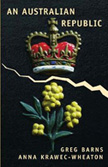 Anna Krawec-Wheaton is an academic colleague and fellow front-line soldier from these same days of struggle in 1999, who is also the author of a political science doctorate on the subject. The referendum (for those Canadians who may have forgotten) asked the Australian people whether they wanted to replace the British monarchy in Australia with a certain sort of independent Australian head of state. After a very rough campaign under an ardently monarchist prime minister (John Howard, who is still prime minister today), only 45% said Yes.
Anna Krawec-Wheaton is an academic colleague and fellow front-line soldier from these same days of struggle in 1999, who is also the author of a political science doctorate on the subject. The referendum (for those Canadians who may have forgotten) asked the Australian people whether they wanted to replace the British monarchy in Australia with a certain sort of independent Australian head of state. After a very rough campaign under an ardently monarchist prime minister (John Howard, who is still prime minister today), only 45% said Yes.
Seven years later, the republican cause nonetheless remains quite alive in Australia today. Altogether remarkably from the standpoint of Canada, there are many avowed republicans among current Australian politicians. (Excluding Prime Minister Howard of course, though even he has said who knows what will happen at the end of the reign of the present Queen.)
The Australian Republican movement is still vigorous. And the subject remains a staple of Australian public debate in a way that it has not yet become in Canada.
Greg Barns and Anna Krawec-Wheaton have studied and meditated on what went wrong in the 1999 referendum, with the front-line activist’s passion (and, practically speaking, superior strategic intelligence, of one sort at least). An Australian Republic presents some well-thought-out conclusions about lessons learned for next time.
2. Not just “a game of constitutional musical chairs”
 Two of these conclusions seem especially interesting for the still more reticent and slow-moving republicanism that (believe it or not) is also quietly gurgling across the vast and rugged Canadian geography these days.
Two of these conclusions seem especially interesting for the still more reticent and slow-moving republicanism that (believe it or not) is also quietly gurgling across the vast and rugged Canadian geography these days.
The first is tidily summarized at the start of the fifth chapter in Greg Barns’s and Anna Krawec-Wheaton’s compelling short book: The “desire for an Australian republic, we argue, is much more about values and national identity than it is about being a game of constitutional musical chairs. We are not alone in coming to this conclusion.
 “In 2004, four young Australians, Macgregor Duncan, Andrew Leigh, David Madden, and Peter Tynan, launched themselves onto the national stage with a fresh and exciting book, Imagining Australia. This quartet’s articulate sweep across ideas and policies that might propel Australia into the 21st century included a discussion on the republic.
“In 2004, four young Australians, Macgregor Duncan, Andrew Leigh, David Madden, and Peter Tynan, launched themselves onto the national stage with a fresh and exciting book, Imagining Australia. This quartet’s articulate sweep across ideas and policies that might propel Australia into the 21st century included a discussion on the republic.
“For these writers, a republic represents much more than a tinkering with our constitution which simply replaces the monarch with an Australian head of state. They argued: the debate surrounding an Australian republic is largely one of political philosophy. It is about transforming the nature of our democratic structures, and opening them up to more widespread popular participation. It is about replacing the idea of executive primogeniture, however symbolic in the present system, with an arrangement that better reflects Australia’s traditions of democratic egalitarianism.'”
3. The parallel democratic debate in Canada
 Canada in 2006, you might almost say, already has the arms and legs of this same kind of broad democratic debate, without quite acknowledging that it also has a head. As just a few examples, “democratic reform” has now actually worked its way onto the organization charts of Canadian federal and provincial bureaucracies. We have had provincial citizens’ assemblies debating the arcane subject of electoral reform via “proportional representation” – first in BC and now in Ontario (and there has been a parallel adventure in Canada’s small-is-beautiful province of PEI).
Canada in 2006, you might almost say, already has the arms and legs of this same kind of broad democratic debate, without quite acknowledging that it also has a head. As just a few examples, “democratic reform” has now actually worked its way onto the organization charts of Canadian federal and provincial bureaucracies. We have had provincial citizens’ assemblies debating the arcane subject of electoral reform via “proportional representation” – first in BC and now in Ontario (and there has been a parallel adventure in Canada’s small-is-beautiful province of PEI).
Then there’s the current quest for a democratically elected, regionally representative Canadian Senate (another area where Australia has been ahead of us, since 1901). And this is a plot which “Canada’s new government” under Stephen Harper has most recently been trying to thicken, to what some see as the surprising approval of Canadian voters in opinion polls.
 Of course, “values and national identity” are complicated in Canada by such things as the province that is not a province like the others in Quebec, with its francophone majority and French civil law, to say nothing of sovereigntist movement and political parties – whatever “Quebec sovereignty”may exactly mean.
Of course, “values and national identity” are complicated in Canada by such things as the province that is not a province like the others in Quebec, with its francophone majority and French civil law, to say nothing of sovereigntist movement and political parties – whatever “Quebec sovereignty”may exactly mean.
(You might also want to add what the Constitution Act 1982 calls “the aboriginal peoples of Canada” here. But Australia does have its own version of this complication too – and Greg Barns will tell you that as bad as things may be on this front in Canada today, they are still better than in Australia.)
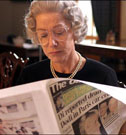 Even or especially from the standpoint of Canada’s unique complications, however (and of course another one is living as a kind of “sidecar” right next to the elephant in the USA), the broad democratic bottom of the republican debate has strong attractions. You could see some of them in the recent unsuccessful effort of the Quebec wing of the federal NDP to urge a campaign for an independent Canadian head of state on the party of Jack Layton at its 2006 convention.
Even or especially from the standpoint of Canada’s unique complications, however (and of course another one is living as a kind of “sidecar” right next to the elephant in the USA), the broad democratic bottom of the republican debate has strong attractions. You could see some of them in the recent unsuccessful effort of the Quebec wing of the federal NDP to urge a campaign for an independent Canadian head of state on the party of Jack Layton at its 2006 convention.
The effort was unsuccessful, and that no doubt still says volumes about the unwillingness of even the ostensibly most left-wing mainstream anglophone Canadian politicians of the moment to touch anything that smacks of the political minefield of “constitutional debate.”
(Remember the horrors of Meech Lake and the failed 1992 Charlottetown Accord, etc, etc. The one big exception here, current Liberal leadership contender Michael Ignatieff, was living abroad at the time, and still thinks it would be a good idea, e.g., to constitutionally recognize Quebec as a nation within Canada, as simple as that. And even his Liberal leadership rival Stephane Dion from Quebec disagrees with him, more or less.)
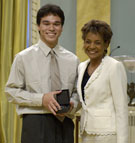 Yet, whatever the current Canadian minority prime minister’s other failings and troubles may be, Stephen Harper’s plans for federally induced “step-by-step” Senate reform (another part of the failed Charlottetown Accord) at least show that you can gain ground on broad questions of democratic reform, while still staying prudently short of the constitutional minefield, for the time being. (Note as well that Prime Minister Harper’s Senate reform plans have also recently won approval from the premier of Nova Scotia.)
Yet, whatever the current Canadian minority prime minister’s other failings and troubles may be, Stephen Harper’s plans for federally induced “step-by-step” Senate reform (another part of the failed Charlottetown Accord) at least show that you can gain ground on broad questions of democratic reform, while still staying prudently short of the constitutional minefield, for the time being. (Note as well that Prime Minister Harper’s Senate reform plans have also recently won approval from the premier of Nova Scotia.)
In this context anglophone and francophone (and aboriginal) Canadians as well as Australians can be inspired and educated by the wider vistas of current democratic “values and national identity,” in Greg Barns’s and Anna Krawec-Wheaton’s An Australian Republic.
4. A directly elected republican head of state
 The new republicanism in such places as Australia, New Zealand, and Canada today (and such places as Jamaica and Barbados should be added to the list as well, especially in a Canadian context) is not just a game of constitutional musical chairs.
The new republicanism in such places as Australia, New Zealand, and Canada today (and such places as Jamaica and Barbados should be added to the list as well, especially in a Canadian context) is not just a game of constitutional musical chairs.
But in one of its decisive ultimate aspects it is a game of constitutional musical chairs. And, as Greg Barns and Anna Krawec-Wheaton nicely explain, another lesson of the 1999 Australian republican referendum is that if you don’t play this game properly you are going to lose. (Especially if your ultimate broad objective is “about transforming the nature of our democratic structures,” and strengthening your “traditions of democratic egalitarianism.” )
The practical question here is what do you replace the British monarchy with. In one sense this is not all that hard a question. As the experience of such present-day parliamentary democratic republics (and former self-governing British dominions) as Ireland and India makes clear, you just effectively turn the governor general, who currently stands in for the Queen locally as head of state, into your first and only independent national head of state.
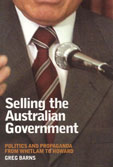 (This at any rate is the simplest way of cutting the very last and almost invisible apron strings to the British monarchy in such places as Australia and Canada and Jamaica and so forth today – and the one that least disturbs all the other current longstanding governmental arrangements. It is almost certainly also the cheapest way of taking the next logical step in the local national development – which is bound to appeal to many good egalitarian tax-paying citizens of the now altogether fully grown national democracies involved.)
(This at any rate is the simplest way of cutting the very last and almost invisible apron strings to the British monarchy in such places as Australia and Canada and Jamaica and so forth today – and the one that least disturbs all the other current longstanding governmental arrangements. It is almost certainly also the cheapest way of taking the next logical step in the local national development – which is bound to appeal to many good egalitarian tax-paying citizens of the now altogether fully grown national democracies involved.)
The hard part of the question, however, is how are you going to select your governor general (or president, as probably most republicans will prefer to say), who has replaced the British monarch as your independent national head of state? So long as the fiction that the Queen appoints the governor general is maintained, having the local prime minister of Australia or Canada etc advise the Queen on exactly who to appoint, as is done now, just sounds like a democratic assertion of local national sovereignty. But if the governor general is going to replace the monarch as head of state, good appearances alone demand some kind of more broadly based selection method.
The exact question here is just how much more broadly based the new selection method should be. And, as An Australian Republic also nicely explains, according to a republican legend which both makes logical sense and has more than a little hard factual support, this is one great practical question on which the 1999 Australian republican referendum finally stumbled.
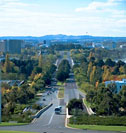 Very quickly, there are two main alternatives. The first is the so-called “minimalist” model, where the new republican head of state is indirectly elected by already directly elected politicians – in the federal parliament, say.
Very quickly, there are two main alternatives. The first is the so-called “minimalist” model, where the new republican head of state is indirectly elected by already directly elected politicians – in the federal parliament, say.
The second is the so-called “directly elected head of state,” chosen by a country-wide popular vote. (And just in case this second alternative is scaring your anglosphere parliamentary democratic sensibilities too much already, with thoughts of unseemly clashes between the prime minister as democratically chosen head of government and the new democratically chosen head of state, note that Ireland has shown, since 1937, that it can be done in practice in a rather harmless way, if you at least still let the elected politicians nominate the candidates for the directly elected head of state.)
To make an already too long story as short as possible from here, the referendum question in 1999 committed the Australian Republican Movement and the leaders of the Yes-side republican cause generally to a strict version of the minimalist model. It became clear as the campaign progressed that many rank and file republican sympathizers preferred a more democratic directly elected model. In the end many of these sympathizers finally voted No – not to the broad concept, but to the proposed way of implementing it, which they felt was not “republican” enough. (Or as the monarchists jibed, the minimalist model was just “A Politician’s Republic.”)
As Greg Barns and Anna Krawec-Wheaton quite carefully and discreetly summarize the argument in their new short book: “The schism that emerged with the people’s preference for a directly elected head of state played a significant role in the failure of Australia’s push for a republic in the 1990s … The desire for a directly elected president seems to be inextricably connected to the substantial breakdown in trust between the electorate and the elected – a phenomenon not unique to Australia.”
5. “It’s time to vote for the Governor General” in Canada
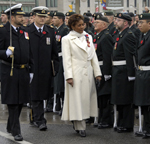 What, you may of course ask, does all this have to do with Canada today? And, very quickly again, there are at least two good answers at the moment.
What, you may of course ask, does all this have to do with Canada today? And, very quickly again, there are at least two good answers at the moment.
First, Greg Barns and Anna Krawec-Wheaton have come to believe, or at least strongly suspect, that only some form of directly elected model of selecting the new republican head of state can finally win the approval of the electorate in another referendum.
That to them seems very much like one big lesson of 1999. Yet their most exact and precise policy argument is just that, whatever exact selection method is finally put to the people’s vote again, some quite broad popular consensus on what is involved must be achieved in advance.
In casting about for ways to help promote and achieve this kind of consensus Greg Barns and Anna Krawec-Wheaton have landed on a current political science concept known as “deliberative democracy.” And they have concluded that “the most relevant example for a deliberative-democracy approach to the Australian republic is that of British Columbia (BC) in 2003” – where “a citizen’s assembly consisting of one man and one woman drawn from each electoral district, as well as two aboriginal members” was established, to explore a new provincial electoral system for Canada’s third most populous province.
(Intriguingly enough, Toronto Globe and Mail columnist Jeffrey Simpson actually proposed a similar arrangement for investigating the future of the monarchy in Canada, when the present Canadian governor general, the excellent Michaelle Jean, was officially installed in Ottawa in September 2005.)
 The second big Canadian angle here turns around an editorial in the September 25, 2006 issue of Maclean’s magazine, entitled “It’s time to vote for the Governor General.” This drew on a recent proposal from former Governor General Adrienne Clarkson, for a more broadly based reform of the method for selecting the governor general in Canada today. But it essentially amounts to the same minimalist model (of indirect election by the federal parliament) that went down to defeat at the hands of the people in the 1999 Australian republican referendum.
The second big Canadian angle here turns around an editorial in the September 25, 2006 issue of Maclean’s magazine, entitled “It’s time to vote for the Governor General.” This drew on a recent proposal from former Governor General Adrienne Clarkson, for a more broadly based reform of the method for selecting the governor general in Canada today. But it essentially amounts to the same minimalist model (of indirect election by the federal parliament) that went down to defeat at the hands of the people in the 1999 Australian republican referendum.
Strictly speaking, in Canada we are not getting into this kind of debate about how to choose what the press nowadays often enough calls the country’s present “de facto head of state“ because we are, as yet, deeply concerned about the future of the monarchy.
It is just that in our present fractured federal politics and wave of minority federal governments, we have come to see that a governor general who actually does retain some important residual practical constitutional responsibilities of the Crown, especially in cases of elections where no party wins a majority of seats in Parliament, should no longer just be chosen by the Canadian prime minister of the day, acting all alone. This too only feeds “the substantial breakdown in trust between the electorate and the elected – a phenomenon not unique to Australia.”
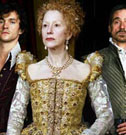 At the same time, this past September’s Maclean’s editorial also noted that: “Canadians are deeply divided on the role of the British monarchy in our parliamentary system … A year ago, a Strategic Counsel poll found … 47 per cent saying ties to the Crown should be cut, and 47 per cent in support of the status quo … Opposition to the monarchy … is particularly strong in Quebec.”
At the same time, this past September’s Maclean’s editorial also noted that: “Canadians are deeply divided on the role of the British monarchy in our parliamentary system … A year ago, a Strategic Counsel poll found … 47 per cent saying ties to the Crown should be cut, and 47 per cent in support of the status quo … Opposition to the monarchy … is particularly strong in Quebec.”
As the end of Mme Michaelle Jean’s current term in September 2010 draws closer, there probably is going to be some increasing practical political pressure to at least reform the governor general selection method in Canada. In preparation, the approximately half of the Canadian population that already wants to see ties to the Crown cut could very usefully ponder the lessons suggested in An Australian Republic by Anna Krawec-Wheaton and Greg Barns. (And note too that in April 2005: “Fifty-five per cent [of Canadians] agreed with the following statement asked in an Ipsos-Reid poll conducted for CTV and The Globe and Mail: when Queen Elizabeth’s reign ends, Canada should end its formal ties to the British Monarchy.’ This is up seven percentage points from the 48 per cent who agreed with that statement in October 2002.”)
6. A final footnote on “re-branding” and the Australian example in Canada
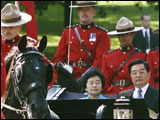 In 2003 Frederick Vaughan, a professor emeritus of political science at the University of Guelph in Southern Ontario, published another intriguing republican book called The Canadian Federalist Experiment: From Defiant Monarchy to Reluctant Republic.
In 2003 Frederick Vaughan, a professor emeritus of political science at the University of Guelph in Southern Ontario, published another intriguing republican book called The Canadian Federalist Experiment: From Defiant Monarchy to Reluctant Republic.
Especially when you set Australia and Canada side by side, a certain continuing “reluctance” does seem an apt way to describe the republican conversation in Canada today. Yet in some respects Canada over the past while has been having its own versions of the republican debate in Australia, under various different names.
In the coarsest language of contemporary Canadian public talk, e.g., both Canada and Australia (along with New Zealand, Jamaica, and so forth) need “re-branding” for the 21st century. And, you might even say, that is also the ultimate point of all the republican movements in all the present-day former self-governing dominions and related colonial and quasi-colonial appendages of the now fallen anglophone empire.
There are several sides to the argument for re-branding. But certainly in both Canada and Australia one of them involves adjusting to the impact of the dramatically increasing cultural diversity of global migration patterns over the past several decades now. And this is certainly an important subtext of both the Australian and Canadian republican debates as well.
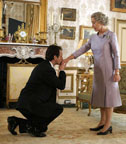 To be only somewhat unfairly brief and to the point – and allowing for the new Muslims among even the High Tories, most monarchists are concerned to entrench the old British colonial pasts of both countries as deeply as possible. While remaining committed to still highly valued “Westminster” traditions of parliamentary government (even in French-speaking Quebec, it seems clear enough), most republicans are more concerned to make more room for people from a wide variety of non-British backgrounds, in the democratic “values and national identity” of Canada and Australia today.
To be only somewhat unfairly brief and to the point – and allowing for the new Muslims among even the High Tories, most monarchists are concerned to entrench the old British colonial pasts of both countries as deeply as possible. While remaining committed to still highly valued “Westminster” traditions of parliamentary government (even in French-speaking Quebec, it seems clear enough), most republicans are more concerned to make more room for people from a wide variety of non-British backgrounds, in the democratic “values and national identity” of Canada and Australia today.
Despite its apparent lagging behind Australia, here as elsewhere it is arguable enough (as Greg Barns himself recurrently does argue in his newspaper columns) that in some respects Canada is actually somewhat ahead of its friendly rival down under.
The last two prime ministerial appointments of Canadian governor generals, e.g., have themselves tried to reach out to the growing numbers of people from non-British backgrounds in Canada today. Probably Canada’s very longstanding French connections can be given some credit in this context. (It was Jean Chretien who started the trend by appointing Governor General Clarkson.) And hopefully the precedents set will have their own echoes in some ultimate reformed and democratized method of selecting a ceremonial Canadian head of state.
 A still larger reality that Greg Barns’s and Anna Krawec-Wheaton’s An Australian Republic can show Canadians who are ready to listen, however, is that “re-branding” is not finally the best way of looking at the diffuse and vague but still surprisingly vast and important change involved. It is instead finally about “values and national identity” and “about transforming the nature of our democratic structures, and opening them up to more widespread popular participation … about replacing the idea of executive primogeniture, however symbolic in the present system, with an arrangement that better reflects … traditions of democratic egalitarianism.”
A still larger reality that Greg Barns’s and Anna Krawec-Wheaton’s An Australian Republic can show Canadians who are ready to listen, however, is that “re-branding” is not finally the best way of looking at the diffuse and vague but still surprisingly vast and important change involved. It is instead finally about “values and national identity” and “about transforming the nature of our democratic structures, and opening them up to more widespread popular participation … about replacing the idea of executive primogeniture, however symbolic in the present system, with an arrangement that better reflects … traditions of democratic egalitarianism.”
“Republicanism” in what the British monarchy nowadays calls its “Commonwealth Realms” is finally about the sovereign people of Australia and the sovereign people of Canada and so forth standing up at last, and saying we’re who ultimately count in our now fully grown national parliamentary democracy today.
(And Australia, by the way, is also ahead of Canada at the moment on a related branch of the subject here. In Canada today new citizens still swear allegiance to “Her Majesty the Queen Elizabeth the Second, Queen of Canada, her Heirs and Successors.” In Australia, since 1994, they “pledge my loyalty to Australia and its people, whose democratic beliefs I share, whose rights and liberties I respect, and whose laws I will uphold and obey.” )
 Many Canadians still no doubt see the idea of actually learning something about the Canadian future from Australia as eccentric at best. Australia, after all, doesn’t even have a flag of its own yet. And we’ve had that in Canada since 1965. Australia doesn’t have anything like Quebec to worry about. It is thousands upon thousands of miles away from the United States. It still plays cricket and a version of football that no one else in the world understands. And its leading gift to Hollywood is Mel Gibson. (Or is it really Russell Crowe, or Nicole Kidman, or Kiley Minogue, or Crocodile Dundee?)
Many Canadians still no doubt see the idea of actually learning something about the Canadian future from Australia as eccentric at best. Australia, after all, doesn’t even have a flag of its own yet. And we’ve had that in Canada since 1965. Australia doesn’t have anything like Quebec to worry about. It is thousands upon thousands of miles away from the United States. It still plays cricket and a version of football that no one else in the world understands. And its leading gift to Hollywood is Mel Gibson. (Or is it really Russell Crowe, or Nicole Kidman, or Kiley Minogue, or Crocodile Dundee?)
Yet by all inside accounts available, learning how some things are done very well in the Land of Oz these days was one secret behind the minority-government triumph of Stephen Harper’s new Conservative Party of Canada, in the surprising enough federal election of January 23, 2006. And Greg Barns’s and Anna Krawec-Wheaton’s engaging new book on An Australian Republic finally demonstrates that there are also a few things the more progressive sides of the Canadian political spectrum can usefully learn from their institutional brothers and sisters down under (even if it is still such a very long airplane flight away).
Randall White is the author of a number of books on Canadian history and politics, including Voice of Region: The Long Journey to Senate Reform in Canada, and Ontario Since 1985.

